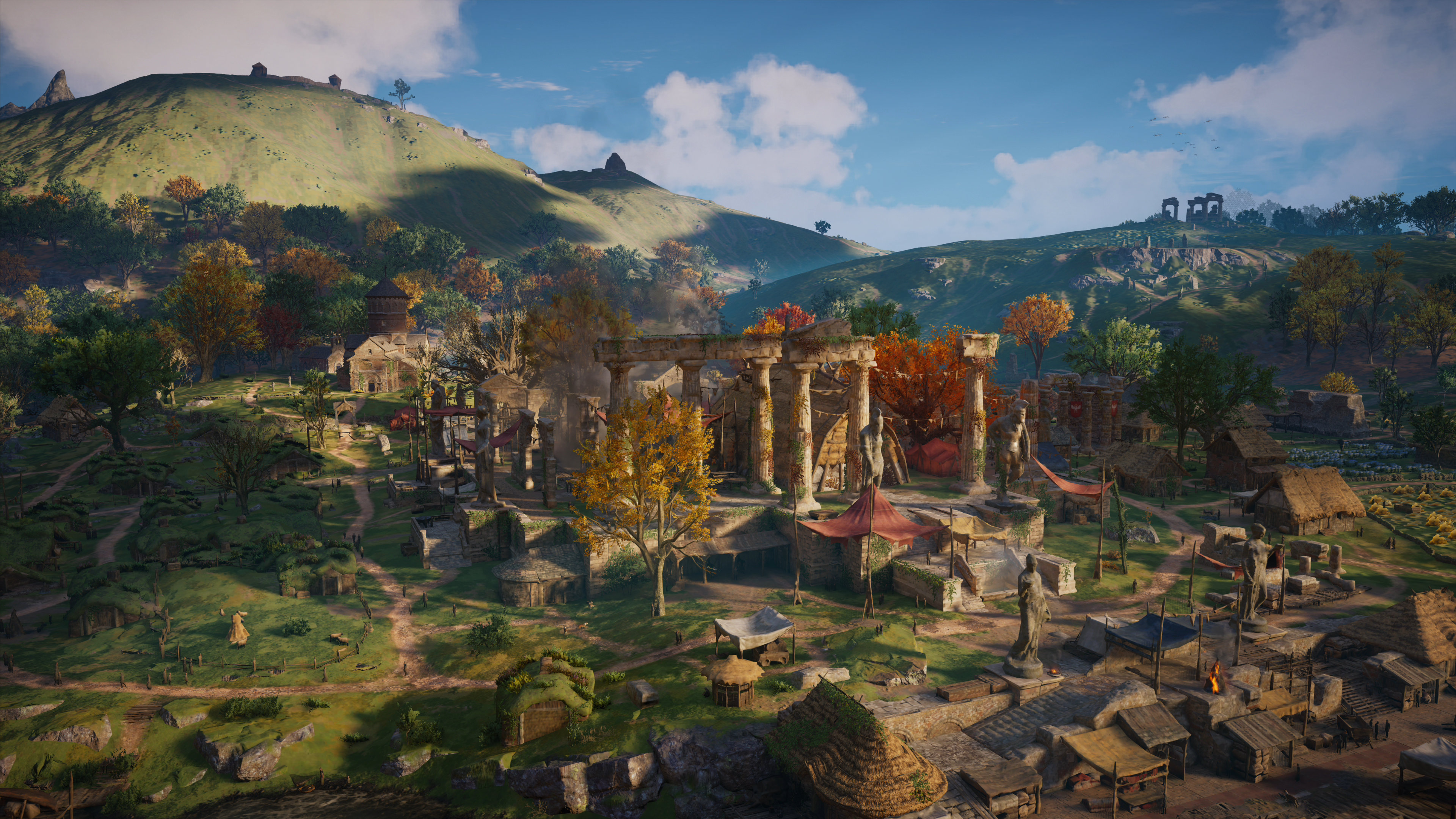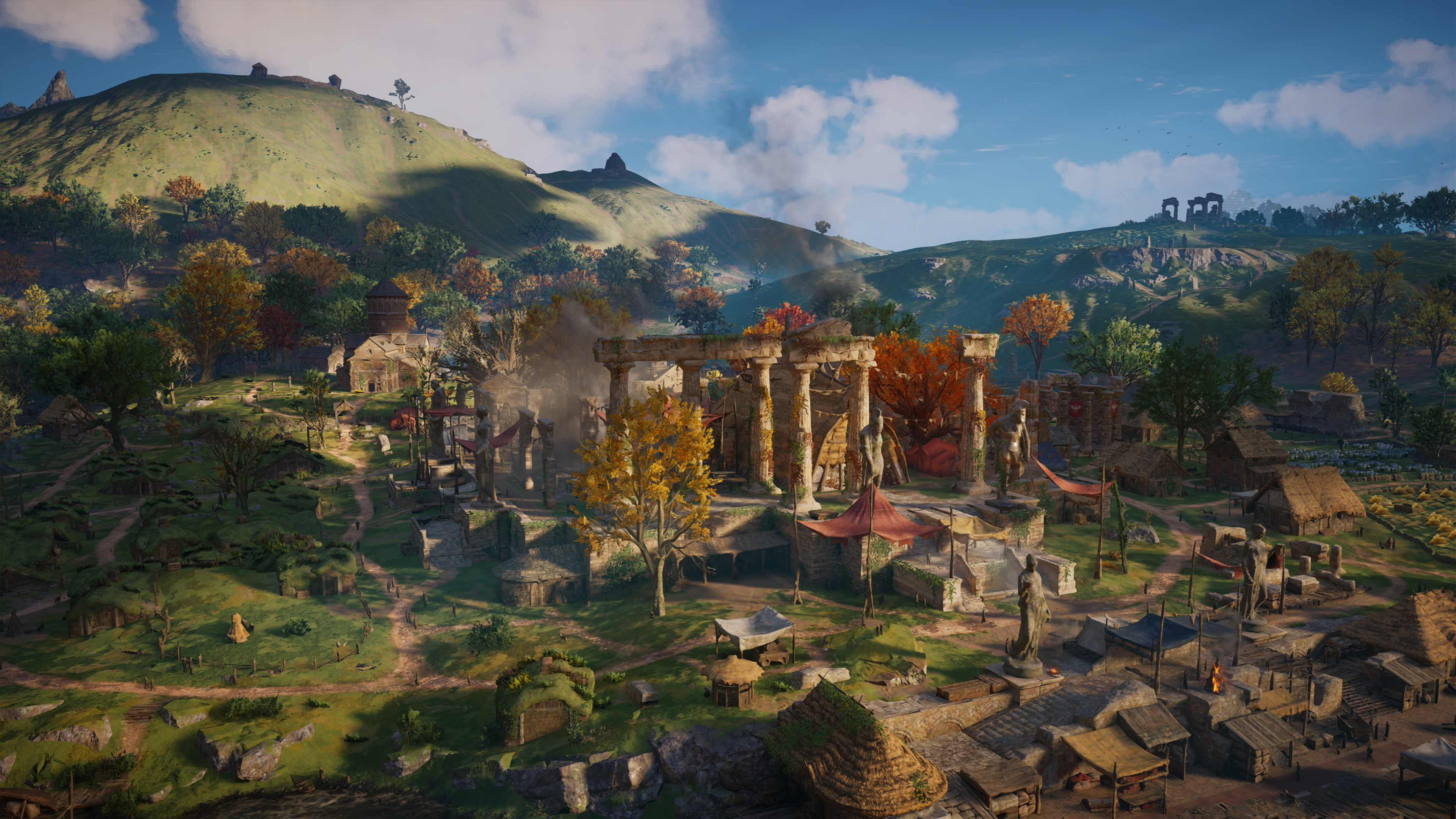AMD Radeon Super Resolution is FSR-style upscaling for almost any game

GPU-based upscaling has proven to be one of the most useful additions to gaming PC tech in years. Big performance improvements in exchange for only a minor drop in visual quality, if any at all? Yes please and thank you. Nvidia’s DLSS has established itself as the gold standard of upscalers, outperforming AMD’s FidelityFX Super Resolution (FSR), but the Radeon makers are now readying two new offerings: FSR 2.0 and Radeon Super Resolution (RSR).
FSR 2.0 looks to be a straight upgrade on the current 1.0 version, promising sharper picture quality with “optimized anti-aliasing” to better compete with the built-in, AI-assisted edge smoothing of DLSS. It will still need to be implemented in games by their developers, though – unlike RSR, which aims to work with just about any game by applying its upscaling algorithm at the GPU driver level.
If RSR’s premise sounds familiar, it’s probably because of Nvidia Image Scaling (NIS), which released a few months back and performs almost exactly the same role: forgoing more high-tech upscaling techniques in favor of a universal approach that bypasses the need for native game support. Of course, NIS still needs a GeForce GPU to work, so RSR does have its own role to fill if you’ve passed over Nvidia’s best graphics cards in favor of an AMD model. It also deviates further from FSR by specifically requiring a Radeon RX 5000 series GPU or newer.
RSR is out right now via a big Radeon Software update, whereas FSR 2.0 is coming Q2 2022: that’s sometime between April and the end of June. I’ve been testing a preview build of Radeon Super Resolution, and although it probably won’t match FSR 2.0 on overall quality, it looks like a worthy alternative for when your AMD GPU could use some help.
The Radeon RX 6500 XT I certainly could use, what with its meagre 4GB of RAM. Despite this I set about seeing how it could handle both 4K and 1440p, while installed in our test PC along with an Intel Core i5-11600K and 16GB of RAM. Like Nvidia Image Scaling, RSR is enabled first by toggling it on in the GPU’s software utility (Radeon Software, in this case) then lowering the in-game display resolution of whatever game you want to upscale. For games that lack an exclusive fullscreen mode, you’ll also need to go into Windows’ display settings and drop the monitor resolution there as well. That’s a lot more faff than just slapping on FSR or DLSS, though arguably not the worst price to extract for RSR’s much wider compatibility.


First up was Assassin’s Creed Valhalla, in which I abused the Radeon RX 6500 XT by performing a test run at native 4K with Medium graphics settings. That produced an average of just 18fps, but with RSR set to upscale from 1440p, this climbed all the way to a playable 34fps. And with respectable image quality too – as you can see from the screenshots above, there’s next to nothing in the way of muddiness or overzealous sharpening in the upscaled image. You’d really have to zoom in to see any detail differences. Y’know, like this:

Even so, that tiny detail drop is no great shakes next to the advantage of (very nearly) doubling the average frame rate over native resolution. A good start for RSR.


In Hitman 3, the quality difference between native 4K and upscaled 1440p is stronger, mainly thanks to a more pronounced haziness; the upscaled image undoubtedly looks more heavily processed. It’s a tad darker, too.

Again, though, all that comes with a dramatic performance boost. With Ultra quality settings, the Dubai benchmark averaged 22fps at 4K and 43fps when upscaled from 1440p.


RSR can also do good work when upscaling from 1080p to native 1440p; you don’t need one of the best 4K monitors to take advantage of it. It gave Shadow of the Tomb Raider a big boost on its Highest quality setting, jumping from 35fps at 1440p to a much smoother 53fps when upscaling from 1080p.

A closer look reveals there is a loss in sharpness visible on distant objects, though up close the difference is harder to notice.


Watch Dogs Legion gets a lot of value out of RSR as well. First there’s the performance gain: 47fps on 1440p, using the Medium quality preset, becomes 67fps when upscaling from 1080p. And the general quality difference is barely there:

There’s perhaps a tiny touch more visible aliasing in the upscaled image, but not to the extent that I noticed it much in motion.


Total War: Three Kingdoms has some more conspicuous jaggies when upping the scale from 1080p to 1440p. Native 1440p isn’t hyper-smooth either, but because RSR maintains the same AA without introducing its own (as DLSS does), it’s never going to be 100% as sharp.

There’s also a grainy effect that’s present in native resolution, but becomes more pronounced after upscaling is applied. Still, that might be worth accepting when RSR boosts performance as much as it does: on Medium quality, Three Kingdoms’ Battle benchmark pushed out 78fps after upscaling, compared to 47fps at native 1440p.


Perennial performance problem child Elden Ring can benefit too. On Medium quality, I averaged 46fps with the resolution at native 1440p; dropping this to 1080p, with RSR doing the rest, brought the frame rate up to 59fps.

It didn’t help with Elden Ring’s stuttering – unlike the Steam Deck – and there’s some quite noticeable sharpening with RSR, but it’s nothing ruinous.



God of War also provided the means to see how RSR matches up against its smarter brother, FSR. As it turns out, RSR lands somewhere between FSR’s ‘Quality’ and ‘Ultra Quality’ settings, at least when upscaling from 1080p to 1440p. The Original quality preset and native 1440p averaged 42fps in my benchmark run, rising to 57fps with FSR on Ultra Quality, 60fps with RSR, and 66fps with FSR on Quality.


To my eyes, Ultra Quality FSR is better than RSR at preserving the quality of native res: sharpness is about the same on purely anti-aliasing terms, but there’s slight smudginess to certain textures with RSR that Ultra Quality FSR avoids. It’s surely no coincidence that this upscaling hierarchy reflects the rendering resolution each one uses when targeting 1440p: Ultra Quality FSR uses 1970×1108, RSR uses 1920×1080 , and Quality FSR uses 1708×960.
Radeon GPU owners should therefore stick to the top FSR setting wherever it’s available, though in fairness, the whole point of RSR is to step in when it isn’t. And this driver-level tech can do a rather fine job, even if it usually ends up “close enough” to native res quality as opposed to matching it 1:1.
It’s also worth noting that while RSR worked as expected in most of the games I tried, it wasn’t 100% compatible with 100% of games. For the life of me, I couldn’t get upscaling from 1080p to 1440p to work in AssCreed Valhalla and Hitman 3, even as it performed admirably with 1440p to 4K. It didn’t appear to be a borderless vs. fullscreen issue, but the only ‘help’ I got from AMD’s software was an incorrect assertion that I was attempting to run the game at native res.
I also tried RSR in Horizon Zero Dawn, and Radeon Software didn’t even acknowledge that I was attempting to upscale – successfully or otherwise. So far these problems appear specific to certain games, and a small number at that, so hopefully AMD can get them fixed.
For the most part, Radeon Super Resolution is worth keeping in mind for when your Radeon card struggles to keep up with a high-res monitor. With some more polish, it’ll be the ideal study for FSR.
Reference-www.rockpapershotgun.com